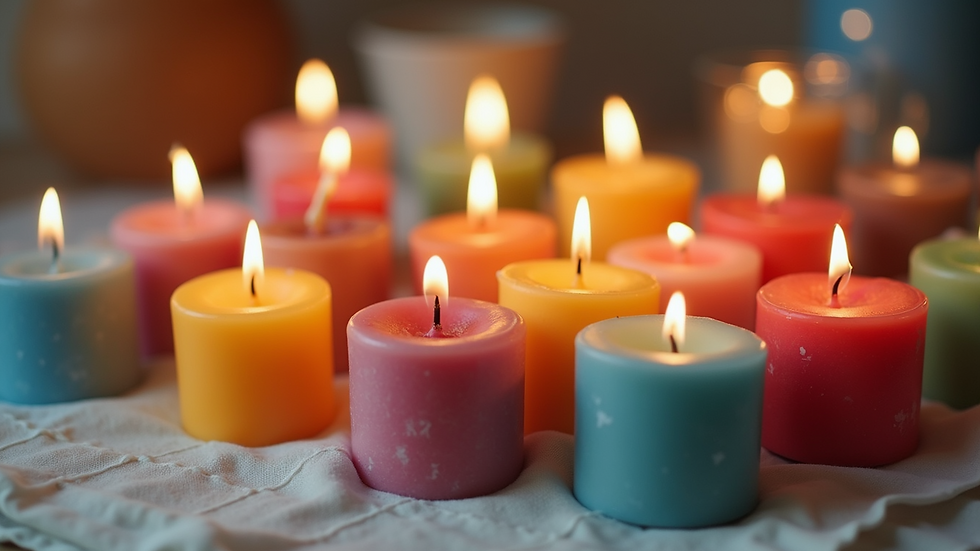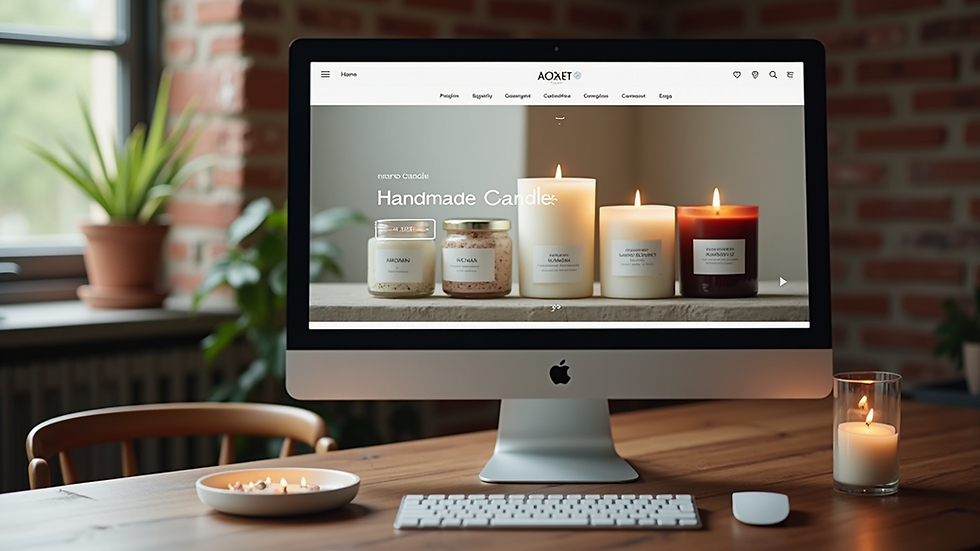The Art of Creating Unique Candles by Hand
- Reynaldo Pena
- Jul 1
- 5 min read
Creating unique candles by hand has become a popular form of art and craft. This engaging activity allows you to express creativity, personalize gifts, and fill your home with delightful scents. Whether you're a hobbyist or planning to start a small business, making your candles can be both fulfilling and profitable. In this blog post, we'll explore the process of making unique candles, the materials you'll need, tips to make them stand out, and where to sell your handcrafted creations.
Understanding Unique Candles
Unique candles are more than just a source of light; they have become a significant aspect of home decor. They come in various shapes, sizes, and scents, making them suitable for any occasion. The charm of these candles lies in their ability to reflect personality and mood. For instance, you might make floral-scented candles for a romantic dinner or fresh citrus-scented ones for a summer gathering.
Candles can also represent various themes. Think about seasonal fragrances, colors that match the decor, or even just random patterns that catch the eye. It’s all about using your imagination to create something one-of-a-kind. That is the beauty of crafting unique candles—every creation tells a story and speaks to a particular vibe or emotion.

Materials for Crafting Unique Candles
Creating unique candles requires a few essential supplies. Here's a breakdown of what you'll need:
Wax: The most common types include paraffin, soy wax, beeswax, and palm wax. Soy wax is particularly popular because it's eco-friendly and burns cleanly.
Wicks: Choose wicks made from cotton or wood. The size and type of wick will depend on the size of your candle.
Fragrance Oils: For scented candles, select high-quality fragrance oils. Aim for a balanced mix to ensure the scent is pleasant but not overpowering.
Dyes: If you want colored candles, use candle dyes specifically meant for wax. They can be found in liquid or chip form.
Containers or Molds: Depending on your design, you may require jars, tins, or silicone molds.
Thermometer: This tool will ensure that your wax reaches the appropriate temperature for pouring.
Pouring Pitcher or Double Boiler: Use these to melt your wax safely.
With these materials in hand, you'll be well-equipped to start your candle-making journey.

What is the best online marketplace for handmade candles?
If you’re looking to sell your unique candles, the choice of marketplace can make or break your business. One of the most popular platforms for selling handmade items, including candles, is Etsy. Here, you can reach a large audience eager for handcrafted products.
Another significant player is Amazon Handmade, which enables artisans to sell their unique creations while benefiting from Amazon's vast market reach. Additionally, consider setting up your own website to showcase and sell your products. This way, you control the branding and presentation of your candles.
Social media platforms like Instagram and Facebook also provide excellent opportunities for promoting your handmade creations. You can create visually stunning posts that highlight your unique designs and fragrances, allowing your creativity to shine and attract new customers.

Tips for Creating Unique Candles
To make your candles truly unique, consider the following tips:
Experiment with Shapes and Molds: Use unusual molds to create unique candle shapes. Think of geometric designs or even whimsical characters. The shape can make your candle a conversation starter.
Combine Fragrances: Don’t be afraid to mix scents. For instance, lavender mixed with eucalyptus can create a calming atmosphere—perfect for relaxation. Experiment until you find the perfect blend that resonates with you.
Use Natural Additives: Incorporate natural materials, such as dried flowers or herbs, into your candles. They not only enhance the aesthetic but also contribute subtle scents.
Pay Attention to Color: Color selection can influence the mood of your space. Create seasonal themes, such as pastels for spring or bold tones for fall. Mixing colors can also lead to striking designs.
Label Your Creations: A unique label can enhance the overall appeal of your candles. Create eye-catching designs that reflect your personality and make your candles memorable.
Perfect Your Technique: Practice makes perfect. The more you create, the better you’ll become at mastering the pouring, scent mixing, and overall aesthetics. Seek out workshops or online tutorials to improve your skills.
With these strategies, your candles will not just be unique; they will be delightful works of art that embody your creativity and passion.
Common Mistakes to Avoid
When creating unique candles, it's crucial to avoid common pitfalls that can impact your final product. Here are a few mistakes to steer clear of:
Using the Wrong Wick Size: A wick that’s too small will struggle to burn evenly, while a wick that’s too large can create soot and lead to a significant flame. Always test wicks to find the perfect match for your candle size.
Not Measuring Properly: Accurate measurements of wax and fragrance are essential. Too much fragrance oil can lead to rapid burning, while too little can result in a weak scent. Stick to recommended ratios for optimal results.
Ignoring Temperature: If you pour wax that’s too hot, it can result in cracks on the surface once it cools. Conversely, pouring at too low a temperature can cause the wax to settle improperly. Always monitor the melting and pouring temperatures closely.
Skipping the Cure Time: After pouring your candles, let them cure for a few days before burning. This allows the fragrances to fully set in the wax, leading to a better scent throw when lit.
Neglecting Safety: Wax can be dangerous when melted, so always work in a safe environment and wear protective gear. Never leave melting wax unattended, and use proper equipment for handling hot materials.
By being mindful of these common mistakes, you can enhance your candle-making skills and create higher-quality products.
The Future of Handmade Candles
As the world shifts towards eco-friendliness and personalization, the future of handmade candles looks bright. Consumers are increasingly drawn to handmade, quality products crafted with love.
Starting a handmade candle business can be incredibly rewarding. There’s a growing market for sustainable and unique products. Focus on using eco-friendly materials, like soy wax and organic fragrances, to attract environmentally conscious buyers. As you refine your craft, consider expanding your product range with seasonal collections or themed candle sets.
Selling your creations online can elevate your reach and profits. Leverage social media, engage with your customers, and seek feedback to continually improve your offerings.
Candles are not just items; they are experiences. Share stories around your creations—what inspired each scent or design. This emotional connection can resonate deeply with buyers, encouraging them to choose your candles over mass-produced alternatives.
Creating unique candles is an art form that combines passion, creativity, and business savvy. Embrace your craft, experiment with designs and fragrances, and share your passion with the world. Whether you're making candles as a hobby or as a source of income, the most important thing is to enjoy the process.




Comments